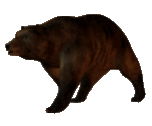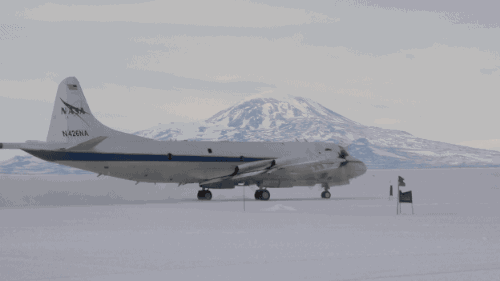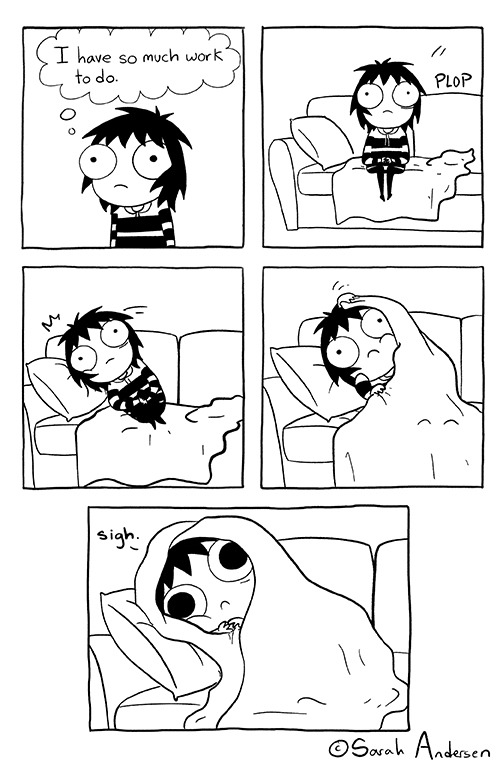Slowly Approaching Bear

slowly approaching bear
More Posts from Youaurendenial and Others


Our Future In Space

2016 Sets Global Temperature Record
We just experienced the hottest year on record…again.

2016 was hotter than 2015, the previous record. And 2015 hotter than 2014, the previous record year.
These record temperatures are all part of a warming trend that dates back to the late-19th century, largely caused by human emissions of carbon dioxide and other gases into the atmosphere.

A lot of this warming trend has been in the last 35 years. In fact, 16 of the 17 warmest years on record have been since 2001.
To help us gather this data, planes and boats travel out from Antarctic research stations to gather information from the Arctic region, in addition to space-based observatories.

Scientists at our Goddard Institute for Space Studies analyze data from 6,300 weather stations, observations of sea surface temperature and Antarctic research stations, all to determine how the average surface temperature is changing.

Scientists at the National Oceanic and Atmospheric Administration separately analyze the same data to track global temperature.
The two agencies reached the same conclusion about 2016’s record-setting heat.
Variations in local weather mean parts of the globe did not experience a record-setting year. Some places still had snow, cold weather and below-record temperatures, but the overall global average was higher than any previous year.

For instance, according to NOAA the average temperature in the 48 contiguous United States was not quite as high as in 2015, which still holds the record.

A combination of space- and land-based measurements gives us a unique perspective on Earth, the only planet we know of that supports life.
To learn more about the global temperature record or see how average surface temperature for individual months, visit: http://data.giss.nasa.gov/gistemp/
Make sure to follow us on Tumblr for your regular dose of space: http://nasa.tumblr.com
New paint colors invented by neural network
So if you’ve ever picked out paint, you know that every infinitesimally different shade of blue, beige, and gray has its own descriptive, attractive name. Tuscan sunrise, blushing pear, Tradewind, etc… There are in fact people who invent these names for a living. But given that the human eye can see millions of distinct colors, sooner or later we’re going to run out of good names. Can AI help?
For this experiment, I gave the neural network a list of about 7,700 Sherwin-Williams paint colors along with their RGB values. (RGB = red, green, and blue color values) Could the neural network learn to invent new paint colors and give them attractive names?
One way I have of checking on the neural network’s progress during training is to ask it to produce some output using the lowest-creativity setting. Then the neural network plays it safe, and we can get an idea of what it has learned for sure.
By the first checkpoint, the neural network has learned to produce valid RGB values - these are colors, all right, and you could technically paint your walls with them. It’s a little farther behind the curve on the names, although it does seem to be attempting a combination of the colors brown, blue, and gray.

By the second checkpoint, the neural network can properly spell green and gray. It doesn’t seem to actually know what color they are, however.

Let’s check in with what the more-creative setting is producing.

…oh, okay.
Later in the training process, the neural network is about as well-trained as it’s going to be (perhaps with different parameters, it could have done a bit better - a lot of neural network training involves choosing the right training parameters). By this point, it’s able to figure out some of the basic colors, like white, red, and grey:

Although not reliably.

In fact, looking at the neural network’s output as a whole, it is evident that:
The neural network really likes brown, beige, and grey.
The neural network has really really bad ideas for paint names.


slowly approaching bear
thebombasticbookman said:
Can you read some of the Windows 95 Tips, Tricks, and Tweaks blog?

Computer’s actin’ funny.
Original post from here by neilcicierega
Concept: fantasy world where dragons are A Thing™ but instead of them being these rare, semi-legendary creatures who exist solely to terrorise and wreak havoc and mayhem and burn inconveniences to a crisp they’re like… dogs… vaguely domesticated cats…
They come in loads of sizes and it’s a common thing to hear them scritching across your roof or rummaging in your garbage. You pass by like four every time you go to the market.
There’s even some snoozing at market stalls and strays playing with children and stealing scraps of food that fall in the street, with mottled scales and mixed textures of feathers and mismatched jewel colours.
Your favourite baker has three tiny western diamondtips who are in charge of keeping the ovens fired up and don’t always eat all of the bread. Sometimes.
Linda Bagshot on the corner has a ground rooster who can’t fly but always reaches up and stretches her neck out as far as she can to try and scrounge pets as you pass her garden wall.
A local inn is named after its summer aura who is the length of the room, all careful length and soft scales, with breath perfumed like spring breeze and scales that emanate just enough warmth to comfort, just enough that you won’t fall asleep, just enough that it’s tempting nonetheless.
The school you went to has a forest guardian older than the town itself who spends all his time slowly ambling down the corridors, and his favourites are the kids learning their first letters who like to read to him, sound out letters and marks that don’t have any correlation just yet, and you know that nobody has conclusively proven that dragons understand human tongues but you also know that if anyone understands, it’s him.
There’s a festival of dragons, a public holiday where banners are strewn and candles glow even into the wee hours and rainbow confetti and paint clogs the streets and maybe some overexcited babies set things alight but that’s ok, the town prepared better this year, far fewer people will lose their gardens and eyebrows this time, they promise.
And yes ok, there are big dragons. Ferocious dragons. Dragons that only come out once every ten years to feed and pillage. Dragons who rule the seas and shake mountains, who take flight and block out the stars. There are reasons you don’t go into the woods at night, reasons some wells are avoided, reasons entire villages up and vanished without a trace.
But there are also dragons who curl up with your children to rock them to sleep, and ward off nightmares. There are dragons who open doors and fetch supplies and guide those without sight. There are dragons who mimic words and whistles and delight in your joy when they get them just right.
There are dragons who adopt orphaned piglets, kittens, lambs, calves, puppies, ducklings. There are dragons who sunbathe and dragons who need kept on ice and dragons who climb atop weather vanes in storms to conduct electricity. Dragons who sparkle like jewels in the light and dragons who glow in the dark and dragons with flora creeping in and around their scales and dragons who sound like windchimes when they fold their wings.
Concept: there are dragons.
There are so many dragons.
my animal behavior professor just emailed me this
gosh but like we spent hundreds of years looking up at the stars and wondering “is there anybody out there” and hoping and guessing and imagining
because we as a species were so lonely and we wanted friends so bad, we wanted to meet other species and we wanted to talk to them and we wanted to learn from them and to stop being the only people in the universe
and we started realizing that things were maybe not going so good for us— we got scared that we were going to blow each other up, we got scared that we were going to break our planet permanently, we got scared that in a hundred years we were all going to be dead and gone and even if there were other people out there, we’d never get to meet them
and then
we built robots?
and we gave them names and we gave them brains made out of silicon and we pretended they were people and we told them hey you wanna go exploring, and of course they did, because we had made them in our own image
and maybe in a hundred years we won’t be around any more, maybe yeah the planet will be a mess and we’ll all be dead, and if other people come from the stars we won’t be around to meet them and say hi! how are you! we’re people, too! you’re not alone any more!, maybe we’ll be gone
but we built robots, who have beat-up hulls and metal brains, and who have names; and if the other people come and say, who were these people? what were they like?
the robots can say, when they made us, they called us discovery; they called us curiosity; they called us explorer; they called us spirit. they must have thought that was important.
and they told us to tell you hello.

-
 ciellio39 liked this · 1 week ago
ciellio39 liked this · 1 week ago -
 greatsylveon2007 liked this · 1 week ago
greatsylveon2007 liked this · 1 week ago -
 cheese-in-space reblogged this · 1 week ago
cheese-in-space reblogged this · 1 week ago -
 stellarskyes reblogged this · 1 week ago
stellarskyes reblogged this · 1 week ago -
 lokiholist reblogged this · 1 week ago
lokiholist reblogged this · 1 week ago -
 lokiholist liked this · 1 week ago
lokiholist liked this · 1 week ago -
 alucardslittlegoblin liked this · 1 week ago
alucardslittlegoblin liked this · 1 week ago -
 toms-pink-confetti39x reblogged this · 1 week ago
toms-pink-confetti39x reblogged this · 1 week ago -
 llkaizenll liked this · 1 week ago
llkaizenll liked this · 1 week ago -
 cupofchemicalchatter liked this · 1 week ago
cupofchemicalchatter liked this · 1 week ago -
 linoleummm reblogged this · 1 week ago
linoleummm reblogged this · 1 week ago -
 rowans-reality liked this · 1 week ago
rowans-reality liked this · 1 week ago -
 alex-strike-is-transgender reblogged this · 1 week ago
alex-strike-is-transgender reblogged this · 1 week ago -
 psychic-legume reblogged this · 1 week ago
psychic-legume reblogged this · 1 week ago -
 andreaissy reblogged this · 1 week ago
andreaissy reblogged this · 1 week ago -
 thymeofarrival reblogged this · 1 week ago
thymeofarrival reblogged this · 1 week ago -
 thymeofarrival liked this · 1 week ago
thymeofarrival liked this · 1 week ago -
 sm0lcatfish reblogged this · 1 week ago
sm0lcatfish reblogged this · 1 week ago -
 sm0lcatfish liked this · 1 week ago
sm0lcatfish liked this · 1 week ago -
 starchytart reblogged this · 1 week ago
starchytart reblogged this · 1 week ago -
 yourschpeebrother liked this · 1 week ago
yourschpeebrother liked this · 1 week ago -
 potatetates reblogged this · 1 week ago
potatetates reblogged this · 1 week ago -
 3zr4theautistic liked this · 1 week ago
3zr4theautistic liked this · 1 week ago -
 joxter-coded reblogged this · 1 week ago
joxter-coded reblogged this · 1 week ago -
 aeyriabird reblogged this · 1 week ago
aeyriabird reblogged this · 1 week ago -
 kumarina liked this · 2 weeks ago
kumarina liked this · 2 weeks ago -
 xhammer-horrorx reblogged this · 2 weeks ago
xhammer-horrorx reblogged this · 2 weeks ago -
 brbfindingalienz reblogged this · 2 weeks ago
brbfindingalienz reblogged this · 2 weeks ago -
 brbfindingalienz liked this · 2 weeks ago
brbfindingalienz liked this · 2 weeks ago -
 monotone-mantlex39 reblogged this · 2 weeks ago
monotone-mantlex39 reblogged this · 2 weeks ago -
 squish-bird liked this · 2 weeks ago
squish-bird liked this · 2 weeks ago -
 wonderllyyyy liked this · 2 weeks ago
wonderllyyyy liked this · 2 weeks ago -
 spammingsouls reblogged this · 2 weeks ago
spammingsouls reblogged this · 2 weeks ago -
 zia-the-weirdo liked this · 2 weeks ago
zia-the-weirdo liked this · 2 weeks ago -
 chaosisunderratedd liked this · 2 weeks ago
chaosisunderratedd liked this · 2 weeks ago -
 whoruntheworld-lesbians liked this · 2 weeks ago
whoruntheworld-lesbians liked this · 2 weeks ago -
 metal-autistic-coven reblogged this · 2 weeks ago
metal-autistic-coven reblogged this · 2 weeks ago -
 metal-autistic-coven liked this · 2 weeks ago
metal-autistic-coven liked this · 2 weeks ago -
 shmell0 liked this · 2 weeks ago
shmell0 liked this · 2 weeks ago -
 vanta-bleu reblogged this · 2 weeks ago
vanta-bleu reblogged this · 2 weeks ago -
 vanta-bleu liked this · 2 weeks ago
vanta-bleu liked this · 2 weeks ago -
 sapph-ohno reblogged this · 2 weeks ago
sapph-ohno reblogged this · 2 weeks ago -
 sapph-ohno liked this · 2 weeks ago
sapph-ohno liked this · 2 weeks ago -
 shmrie reblogged this · 2 weeks ago
shmrie reblogged this · 2 weeks ago -
 pakoon-reblogs reblogged this · 2 weeks ago
pakoon-reblogs reblogged this · 2 weeks ago -
 pakoon-reblogs liked this · 2 weeks ago
pakoon-reblogs liked this · 2 weeks ago -
 wowowhy reblogged this · 2 weeks ago
wowowhy reblogged this · 2 weeks ago -
 wowowhy liked this · 2 weeks ago
wowowhy liked this · 2 weeks ago -
 kidofsquid reblogged this · 2 weeks ago
kidofsquid reblogged this · 2 weeks ago -
 hag-o-hags reblogged this · 2 weeks ago
hag-o-hags reblogged this · 2 weeks ago
